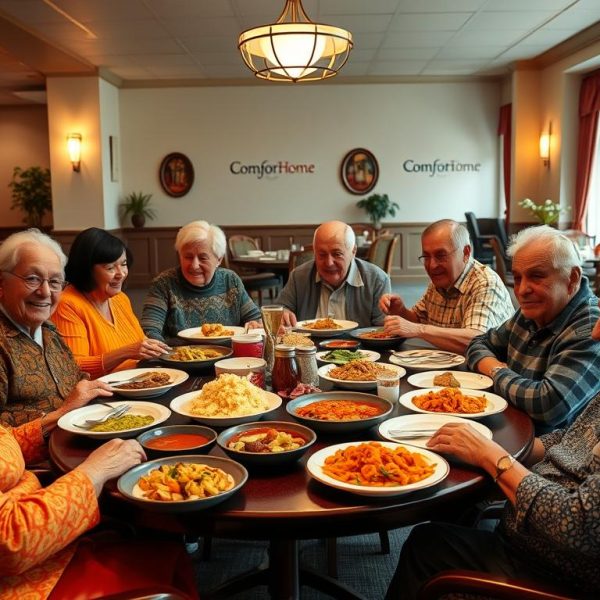When faced with the complexities of managing a serious illness or the realities of end-of-life care, the importance of a compassionate and knowledgeable team becomes apparent. For many families, the terms palliative care and hospice care can seem overwhelming, but understanding the different professionals who dedicate their lives to these fields can offer clarity and comfort. Through their expertise and kindness, these healthcare workers provide essential support to patients and families during some of life’s most challenging moments.
To truly appreciate the value of these professionals, let’s explore their roles through the stories of two families navigating this journey—Sarah, who sought palliative care, and Mark, who chose hospice care for his final days. Their stories offer insight into the difference these compassionate caregivers can make.
Sarah’s Journey with Palliative Care
Sarah was 65 years old when she was diagnosed with advanced cancer. While her prognosis wasn’t definitive, she knew that she would need a team to help manage her symptoms, especially the unrelenting pain and anxiety that seemed to increase with each passing day.
Sarah’s daughter, Emily, suggested palliative care—a specialized approach designed to improve the quality of life for those dealing with serious illnesses. It was during their first meeting with Dr. Patel, a palliative care specialist, that they began to understand the scope of this care.
Dr. Patel explained, “Our goal is to work alongside your other treatments. We’re here to manage your pain, help with your emotional well-being, and ensure your goals and preferences are respected.” He wasn’t just a doctor concerned with lab results—he was a guide, helping Sarah find comfort and peace amidst the turmoil.
But Dr. Patel didn’t work alone. Sarah quickly became familiar with the other members of her care team, each playing a vital role in her care:
- Nurses like Maria, who visited Sarah weekly, were Sarah’s first line of defense against the physical pain that cancer caused. Maria would always ask, “How are you feeling today, really?” and with gentle hands, she’d adjust medications or recommend new ways to alleviate discomfort. More than once, she also held Sarah’s hand during difficult moments, offering a quiet presence that spoke volumes.
- Social workers were an unexpected but much-needed part of the team. Sarah had been worried about what would happen to her home care, and whether she’d be able to continue receiving certain therapies. A social worker named Joan helped ease these concerns by organizing home care services and walking Sarah through the paperwork, reducing the burden of logistics. Joan’s visits were not just about paperwork, though—she also helped Sarah and Emily have some tough conversations about Sarah’s future care and provided emotional support throughout the process.
- Chaplains, like Pastor Greg, were available to provide spiritual support. Though Sarah wasn’t particularly religious, she found comfort in Pastor Greg’s open-minded approach. He didn’t push a particular faith; instead, he provided a safe space for Sarah to talk about her fears and feelings surrounding death. Sometimes, just sitting in silence with him gave Sarah the spiritual connection she didn’t realize she needed.
- Mental health professionals, such as psychologists or psychiatrists, played an equally crucial role. Sarah’s palliative care team included a psychologist who specialized in helping patients like Sarah cope with the mental toll of a life-threatening illness. Together, they worked on managing her anxiety and depression, which had grown alongside the physical pain. The psychologist’s support helped Sarah feel more at ease, as she learned techniques to manage her fears and embrace each day.
Through the combined efforts of this diverse team, Sarah’s physical symptoms were managed more effectively, and she began to find peace in knowing she was cared for holistically. Palliative care, Sarah realized, wasn’t just about treating a disease—it was about treating the person living with it.
Mark’s Journey with Hospice Care
For Mark, a 70-year-old man diagnosed with a life-limiting illness, the decision to transition to hospice care wasn’t easy. His family had been hopeful that treatment might prolong his life, but after several rounds of chemotherapy, Mark had made peace with the idea that his time was limited. Rather than fighting a losing battle, he chose hospice care, where his focus would be on comfort and quality of life in his final days.
From the moment the hospice team arrived at Mark’s home, the atmosphere shifted from one of frantic medical appointments to a space of calm and dignity. Mark’s hospice care was overseen by Dr. Nguyen, the hospice physician, who took the time to sit down with Mark and his family. “We’re here to make sure Mark is comfortable, and that both he and your family receive the emotional and spiritual support you need during this time,” Dr. Nguyen explained with a gentle voice.
Much like Sarah, Mark had a dedicated team, though their focus was different—rather than managing symptoms alongside curative treatments, the hospice team was entirely dedicated to providing end-of-life care:
- Hospice nurses, like Ashley, became a familiar and comforting presence. Ashley was an expert at managing pain, ensuring that Mark’s last days were as comfortable as possible. She was also skilled at recognizing when Mark’s symptoms were changing and adjusted medications accordingly. But it wasn’t just the medical aspect of her care that stood out—Ashley was a compassionate listener who provided reassurance to Mark’s wife, Linda, and gently helped guide her through the emotional complexities of caring for a loved one nearing the end.
- Certified Nursing Assistants (CNAs), like Ben, provided the hands-on personal care Mark needed, from bathing to dressing. Ben’s role went beyond just providing these services; his cheerful demeanor and attentive nature often lifted Mark’s spirits. It was the small things—making sure Mark’s favorite music was playing or bringing in fresh flowers—that made the difference in maintaining Mark’s dignity.
- Social workers were also involved, ensuring that Linda wasn’t alone in navigating the emotional and practical aspects of end-of-life care. Hospice social worker Karen provided invaluable assistance in arranging financial matters, explaining advanced care directives, and even helping organize bereavement counseling for Linda when the time came.
- Chaplains, like Father John, visited regularly, offering spiritual comfort to both Mark and his family. For Mark, whose faith had always been an important part of his life, these visits were a source of great solace. Father John’s presence helped create a peaceful and reassuring environment, one in which Mark felt spiritually prepared for what was to come.
- Volunteers also played a significant role in hospice care, offering companionship and respite for Mark’s family. One volunteer, Jane, visited weekly to sit with Mark, read to him, and provide Linda with a few hours of respite. It wasn’t just about the tasks—they built a bond that brought light into a difficult time.
For Mark and his family, hospice care wasn’t about surrendering—it was about embracing the time that remained with dignity, grace, and the support of a compassionate team.
The Power of Compassionate Care
Sarah and Mark’s stories highlight the unique roles healthcare professionals play in palliative and hospice care. Whether focused on managing pain alongside treatments, as in palliative care, or providing comfort and support at the end of life, as in hospice care, the professionals involved bring expertise and compassion to the forefront of their work.
Both journeys illustrate that these types of care are not just about physical health—they address emotional, spiritual, and psychological needs, creating a holistic experience for patients and their families. From specialized physicians to nurses, social workers, chaplains, and volunteers, each professional contributes to the overall well-being of those they care for, making a profound difference in their patients’ lives.
In a time when decisions about care can feel overwhelming, understanding the dedicated individuals involved in both palliative and hospice care offers a sense of reassurance. Their compassion, knowledge, and support can transform what might otherwise be a daunting experience into a journey marked by dignity, comfort, and emotional healing.
Conclusion: Choosing the Right Path
In Sarah’s case, palliative care gave her the strength to continue her treatments while ensuring she was supported emotionally and physically. For Mark, hospice care brought peace during his final days, surrounded by love and compassionate care.
Whether it’s the specialized expertise of a palliative care team or the dignified support of hospice professionals, these caregivers help families navigate the complexities of illness and end-of-life care, offering kindness, comfort, and peace every step of the way.









I enjoy you because of your own hard work on this blog. Gloria enjoys conducting internet research and it’s really obvious why. A lot of people know all about the powerful way you make great thoughts via the website and as well foster contribution from some others on the area while our favorite girl is now understanding a lot. Take advantage of the remaining portion of the new year. You’re the one performing a good job.
I have been reading out many of your stories and i can claim pretty nice stuff. I will make sure to bookmark your website.
certainly like your website but you have to take a look at the spelling on several of your posts. Several of them are rife with spelling problems and I in finding it very bothersome to inform the reality however I’ll certainly come back again.
My brother suggested I might like this website. He was entirely right. This put up actually made my day. You can not imagine simply how much time I had spent for this info! Thank you!
You are my intake, I have few web logs and rarely run out from to brand : (.
Today, I went to the beachfront with my kids. I found a sea shell and gave it to my 4 year old daughter and said “You can hear the ocean if you put this to your ear.” She put the shell to her ear and screamed. There was a hermit crab inside and it pinched her ear. She never wants to go back! LoL I know this is totally off topic but I had to tell someone!
Really enjoyed this article, can you make it so I get an alert email when you write a fresh article?
I wanted to thank you for this great read!! I definitely enjoying every little bit of it I have you bookmarked to check out new stuff you post…
It’s laborious to find educated individuals on this topic, however you sound like you recognize what you’re talking about! Thanks
I have been absent for some time, but now I remember why I used to love this site. Thanks, I will try and check back more often. How frequently you update your web site?